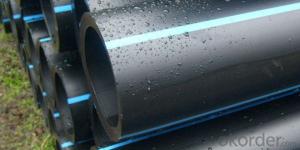Plastic Pipe Fitting Reamer: A Precision Tool
A reamer is a tool that is used to resize existing holes to a specific size by cutting away the internal material. When it comes to plastic pipes, a plastic pipe fitting reamer is an essential tool for ensuring a precise and secure connection. This article will explore the importance of using a plastic pipe fitting reamer, its features, and how to use it effectively.
The Importance of a Plastic Pipe Fitting Reamer
In the world of plumbing, precision is key. A poorly fitted pipe can lead to leaks, which can cause significant damage to a property. A plastic pipe fitting reamer ensures that the holes in the pipe fittings are the correct size for a snug and secure connection. This not only prevents leaks but also ensures that the plumbing system functions efficiently.
Features of a Plastic Pipe Fitting Reamer
A good plastic pipe fitting reamer should have certain features that make it stand out from the rest. Here are some of the key features to look for:
1. Material: The reamer should be made of high-quality material that can withstand the pressure and wear of reaming plastic pipes.
2. Durability: A durable reamer will last longer and provide consistent results, saving you time and money in the long run.
3.: Ease of Use: The reamer should be easy to handle and maneuver, even in tight spaces.
4. Versatility: The reamer should be able to work with different types and sizes of plastic pipes to ensure that it can be used for a variety of projects.
5. Safety: The reamer should have safety features to protect the user from injury while in use.
How to Use a Plastic Pipe Fitting Reamer
Using a plastic pipe fitting reamer may seem intimidating at first, but with the right steps, it can be a straightforward process. Here’s a step-by-step guide on how to use one:
1. Inspect the Pipe and Fitting: Before you begin, inspect the pipe and fitting to ensure that they are free from damage and suitable for reaming.
2. Select the Right Reamer: Choose a reamer that is the appropriate size for the pipe you are working with.
3. Secure the Pipe and Fitting: Make sure the pipe and fitting are held securely in a vice or clamp to prevent them from moving during the reaming process.
4. Apply Cutting Fluid: To reduce friction and heat, apply a cutting fluid to the area that will be reamed.
5. Insert the Reamer: Carefully insert the reamer into the hole of the fitting, making sure it is aligned correctly.
6. Turn the Reamer: Turn the reamer clockwise, applying steady pressure as you go. Be sure not to force the reamer, as this can cause damage to the pipe or fitting.
7. Check the Fit: After reaming, check the fit of the pipe in the fitting. If it is too tight or too loose, you may need to adjust the reamer or try again with a different size.
8. Clean Up: Once you have achieved the desired fit, clean up any debris from the reaming process and ensure that the pipe and fitting are ready for assembly.
Common Issues and Troubleshooting
While using a plastic pipe fitting reamer, you may encounter some common issues. Here are some troubleshooting tips to help you overcome them:
1. Binding: If the reamer binds or gets stuck, it may be due to improper alignment or an incorrect size. Make sure the reamer is the right size and is properly aligned before starting.
2. Over-Reaming: Over-reaming can cause the hole to be too large, which can lead to leaks. To avoid this, always check the fit after reaming and adjust as necessary.
3. Burrs: Burrs can form on the edges of the hole after reaming. To remove them, use a deburring tool or file them down carefully.
4. Vibration: If the reamer vibrates excessively during use, it may be a sign that it is not properly secured or that the cutting fluid is not being applied correctly.
5. Wear and Tear: Over time, the reamer may show signs of wear and tear. Inspect it regularly and replace it when necessary to ensure optimal performance.
The Bottom Line
A plastic pipe fitting reamer is an indispensable tool for any plumbing project involving plastic pipes. By ensuring a precise fit, it helps prevent leaks and maintains the efficiency of the plumbing system. With the right features and proper usage, a plastic pipe fitting reamer can save you time, money, and hassle in your plumbing endeavors. So, the next time you’re working on a plumbing project, don’t forget to reach for your trusty reamer and make those connections with confidence.

